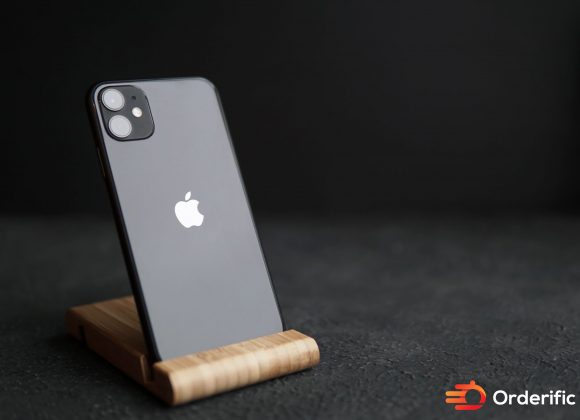Introduction
Welcome to our comprehensive and engaging guide on reprovisioning a cell phone. Reprovisioning is critical in ensuring optimal device functionality, especially if you’re an avid app user. Reprovisioning involves signing back into your device or app and refreshing its settings and permissions. This process becomes essential for applications on jailbroken iOS devices to keep them running smoothly. Using the Reprovision app, available via the Cydia source, you can easily manage this process on your device. In this guide, we’ll walk you through the process, discuss the significance of signing into your device or app, and explain how reprovisioning impacts your device’s operations. Remember your Apple ID, as you’ll need it on this journey. Let’s dive in, shall we?
What Does It Mean To Reprovision A SIM Card?
When reprovisioning your device, it all starts with the signing process. This vital step involves using your Apple ID to sign into your device, a cloud PC, or an app, which in turn allows you to refresh the settings of your iOS device. If you’re dealing with a jailbroken device, you’ll want to pay close attention to the Reprovision app. Available via the Cydia source, this app will help you quickly manage the reprovisioning process.
Before you begin, it’s crucial to read the privacy statement so you’re aware of any potential changes to your device’s settings. It’s also essential to locate and understand the basic settings of your device to complete the process. Now, let’s delve into the world of IPA files. An IPA file is an iOS application archive file that stores an iOS app. You’ll need to have these files on hand when you’re signing in and reprovisioning your device.
Network Loss during the reprovisioning process
Network loss can sometimes occur during the reprovisioning process. This is primarily due to the extensive signing process occasionally disrupting the network connection. However, the Reprovision app ensures your device stays functional, even during network disruptions. The app accomplishes this by re-establishing network connectivity and restoring the IPA files that may have been affected.
Potential issue you might face during the reprovisioning process: No Incoming Calls
Another potential issue you might face during the reprovisioning process is the temporary suspension of incoming calls. This usually happens when the system is in the midst of the signing process. Don’t fret, though! Just like with network loss, the Reprovision app has got you covered. It is designed to quickly restore all normal functions, including incoming calls, once the reprovisioning process is successfully completed.
Inability To Subscribe For More Units Or Data During the reprovisioning process
During the reprovisioning process, you may encounter issues with subscribing for additional units or data. This is a common occurrence but it’s only temporary. As the device undergoes signing and resets its settings, it may temporarily suspend these services. But don’t worry! The Reprovision app will ensure the restoration of these functions once the process is completed, allowing you to subscribe for more units or data as desired.
How Do I Reprovision My SIM Card?
Reprovisioning your SIM card is a straightforward process. Initially, you need to download and open the Reprovision app. Next, sign in using your Apple ID, which enables the app to refresh your device’s settings. Follow the in-app instructions carefully to complete the reprovisioning process. Don’t worry about potential network loss, suspended incoming calls, or temporary inability to subscribe for more units or data – the Reprovision app handles these issues, restoring full functionality once the process is completed.
How Do I Reset My SIM Card?
Resetting your SIM card can be an effective way to resolve network issues or refresh your device’s settings. You’ll want to start by powering off your device before removing the SIM card. After waiting a few moments, reinsert the SIM card and power your device back on. If you’re still experiencing issues, it may be beneficial to consult with your service provider or perform a more comprehensive reprovisioning process using the Reprovision app.
Tips To Solve SIM Disconnection Issues
- If you encounter SIM disconnection issues, try restarting your device or removing and reinserting the SIM card.
- For more stubborn problems, consider using the Reprovision app which can refresh your device’s settings and solve connectivity issues.
- Be patient during the reprovisioning process, it can temporarily disrupt network connectivity and suspend incoming calls or data subscriptions.
- Always remember to read the privacy statement before starting the reprovisioning process, to be aware of any potential changes in your device’s settings.
- Maintain a list of IPA files, as they are necessary for the signing in and reprovisioning process.
Restart Your Phone
Sometimes, simply restarting your device can resolve a host of minor issues. This action effectively refreshes your phone’s systems, potentially ironing out any kinks or glitches. To restart, hold down the power button until the option to ‘slide to power off’ appears, then slide to power off. After waiting for a few moments, press the power button again to switch on your device. This straightforward process may help to restore connectivity and resolve issues linked to your SIM card.
Reinsert Your SIM Card
At times, reinserting your SIM card can be an effective solution to various connectivity issues. By removing your SIM card, waiting for a few moments, and then reinserting it, you can essentially reset the device’s connectivity settings. Remember to power off your device before you begin, and once the SIM card is reinserted, power it back on. This simple procedure can often rectify minor network disruptions and improve the functionality of your device.
Change The Card Slot
If you’re still having issues with your SIM card, consider changing the card slot. Sometimes, the physical card slot can have a defect or dust accumulation affecting its performance. To do this, power off your device, remove your SIM card and insert it into a different slot. After powering your device back on, check to see if the issues have been resolved. Remember, be gentle while handling your SIM card to avoid any physical damage.
Activate Your SIM
Activating your SIM card is another crucial step to ensure optimal connectivity. Each service provider has a unique process for SIM card activation, which typically involves a combination of calling a specific number, using a dedicated app, or visiting their website. Follow the instructions provided by your service provider carefully. It’s important to note that some service providers may require you to have a specific amount of credit on your account before the activation can be completed.
Conclusion
And there you have it – a comprehensive guide to reprovisioning a cell phone. By now, you should have a clear understanding of the significance of signing into your device or app and how reprovisioning can ensure continued, optimal functionality. Remember, occasional network disruptions, temporary suspension of incoming calls, or issues with subscribing for more units or data are all part of the process. You’re now equipped with practical information to tackle these issues and ensure your device runs smoothly.
As technology continues to evolve, efficient functionality and user experience remain paramount. That’s why we encourage you to stay informed and take proactive steps to keep your device in peak condition using the Reprovision app. If you’re interested in learning more, or if you’d like hands-on assistance with the reprovisioning process, we’re here to help.
Don’t hesitate to schedule a demo with us at Orderific. Let us guide you through each step, ensuring your device remains high-performing and reliable. Thank you for taking the time to read our guide. Happy reprovisioning!
FAQs
1. What does reprovisioning mean, and why is it important?
Reprovisioning means refreshing your device’s settings, especially for apps, to ensure optimal functionality.
2. How does reprovisioning apply in the context of technology or equipment?
Reprovisioning in technology or equipment ensures these systems function optimally by refreshing their settings and permissions.
3. What are some common situations that require reprovisioning?
Some common situations that require reprovisioning include when an app isn’t functioning properly, a device is jailbroken, or after a system update.
4. What steps are involved in the reprovisioning process?
The reprovisioning process primarily involves signing back into your device or app to refresh its settings and permissions.
5. Are there any risks or challenges associated with reprovisioning, and how can they be mitigated?
Some risks associated with reprovisioning include temporary network loss or suspended services, which can be mitigated using the Reprovision app.













